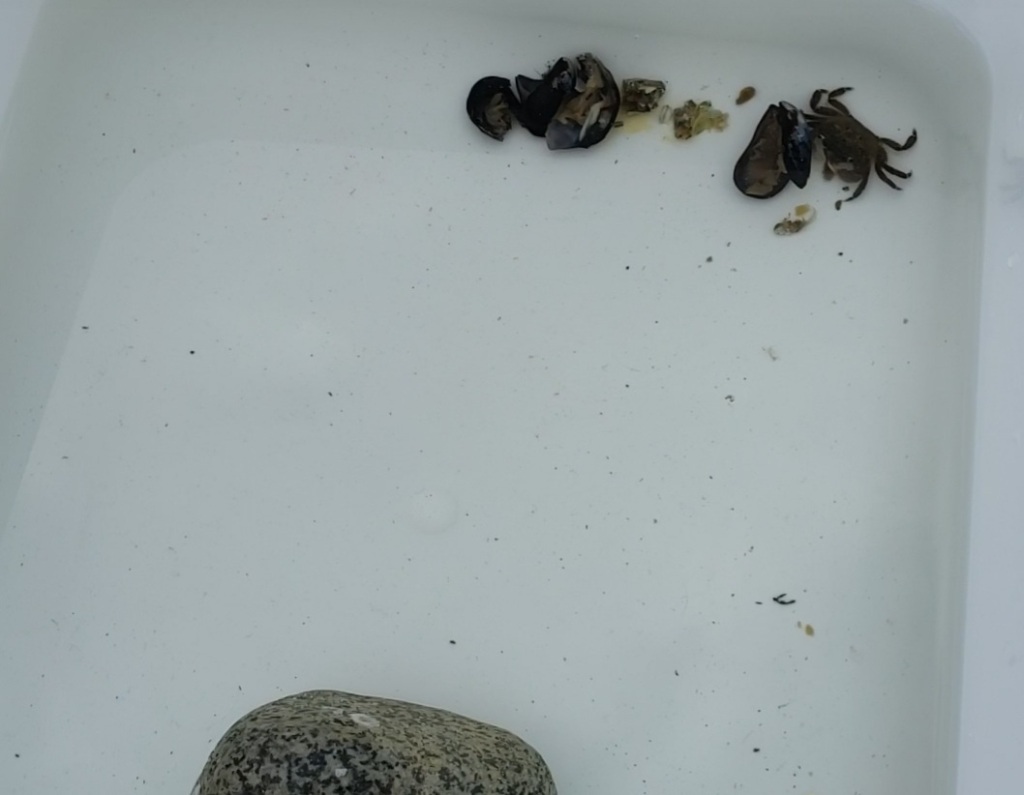They’ve got the armour, but do crabs have a knight’s bravery?
If you’ve ever gone beachcombing, you’ve probably noticed how skittish crabs are. These little critters are pretty common in tide pools and under rocks, but you can often only catch quick glimpses of them before they’ve burrowed, withdrawn into shells, or otherwise hidden. That being said, I was thinking about the differences between hermit crabs and “regular” (shell-less) crabs and came up with an interesting question: are hermit crabs, who carry shelter around with them, braver than regular crabs (also called true crabs)? They don’t have to scurry away under rocks because they have their shell, so perhaps they’d be willing to take bigger risks. This idea became the foundation of my independent project, which I’ll talk about more below.

My project was made up of two experiments. The first experiment involved putting crabs in a container with food on one side (in an exposed area) and a rock on the other, then waiting for 3 minutes to see if the crabs would start eating the food. With each trial I switched between using a hermit crab and a true crab. After analyzing my data, I turned up no significant relationship between the type of crab and their likelihood of feeding.

My second experiment involved a similar setup, but with a foreign object at one side of the tank and no rock. The goal was to see how willing the crabs were to investigate an unknown object, and if hermit crabs were more likely to investigate it than true crabs. I didn’t use a rock because I noticed in the first experiment that the crabs treated the walls as shelter, so I decided that was enough. The foreign object was a pink aquarium rock, and I switched between two sizes. Much like the first experiment, after analysis I found that one crab type was not significantly more likely to investigate the object than the other.

So at the end of the day, I wasn’t able to find any significant differences between hermit crabs and true crabs. What does this mean? Well, maybe hermit crabs and true crabs are actually equally brave (or not brave). When you think about it, this might make sense considering lots of predators have found ways of cracking into shells. If hermit crabs and true crabs are equally vulnerable, then they’re likely to be equally skittish. It’s also possible that a different test would reveal the difference I was looking for. For example, I noticed that the hermit crabs tended to explore their environment more than true crabs. A test that measured the amount of a habitat that the crabs explored could reveal something interesting. Maybe crabs don’t have a knight’s bravery, but perhaps hermits are adventurous at heart?
Looking for more interesting info about crabs? Check out this awesome video about how hermit crabs work together to change shells: Hermit Crabs LINE UP To Swap Shells! | Life Story | BBC Earth Kids – YouTube. Or, you could read this paper about crab smelling by Waldrop (2013): https://doi.org/10.1093/chemse/bjt024






